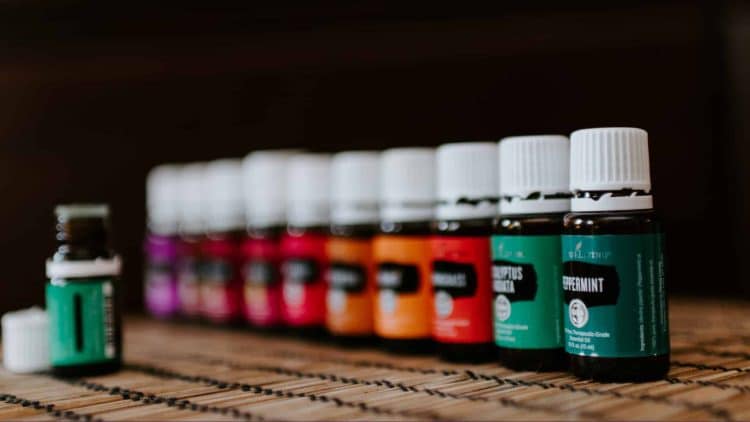Cannabis isn’t the only plant worth extracting botanical components from. There are entire industries centered around extractions from other plants, and new studies are continually being done to uncover more innovative uses for plant extracts. When choosing extraction equipment for plants other than cannabis, you’ll need to consider several factors surrounding the plants you want to use, the products you’re looking to produce, and any safety and quality standards.
Plants and Possibilities
First and foremost, you’ll need to consider your goals. Which plants would you like to be making extracts from? Are you going to be extracting from fruits, trying to salvage bioactive compounds from food waste, or will you possibly be trying to pull essential oils from flowers and herbs? The differences between these options will necessitate different equipment and configurations.
Other plants will demand different equipment as well. If you’re looking to take advantage of the variety of compounds found in hops, you’ll need a configuration very similar to the ones typically used for cannabis extraction, given the plants’ similarity and shared evolutionary lineage.
Whichever plant or plants you aim to work with, you’ll need to investigate the systems best suited for handling that plant’s material and doing so efficiently. If you’ll be working with multiple types of plants, as would be the case with harvesting bioactive compounds from food waste, you’ll need to consider a more general-purpose solution.
Products and Solvent Selection
The next obvious consideration is the type of product or products that you’ll be producing. Again, the differences in the end product will dictate the correct tool for the job. Extracting biological compounds for use in supplements is going to be radically different than creating a concentrate for consumer sales.
Essential oils are another very popular product created by extracting key components from plant materials. Essential oil production is radically different than the extraction process you’d use on hops. Essential oils require a distillation system that usually uses steam to reduce plant matter to several core components, usually focused around collecting one or more terpenes.
Producing natural dyes for both food and other products from plant matter is yet another process, and the systems used for dyes tend to be much more specialized, though they generally have more in common with cannabis and hemp extraction, as CO2 and alcohol-based solvents are fairly common.
The end products are also going to determine any solvents you may use in the extraction process. Of course, solvents will also dictate the equipment you need. For instance, if you’re extracting something for human consumption, you probably want to choose ethanol or CO2 extraction. Hydrocarbon extraction could also be an option but it will require more work to ensure that all solvents and byproducts are removed.
At the same time you want to choose a solvent that isn’t going to interfere with or degrade the compounds that you’re looking to extract. With hops, CO2 extraction has a better chance of preserving the plant’s natural profile — terpenes and all — than either ethanol or hydrocarbons. Then, if you’re making essential oils, you’re just using steam as a solvent, so the choice is taken out of the equation altogether.
Training, PPE, and Lab Configuration
As with any extraction operation, it’s important to consider what your lab will look and function like on a daily basis. Your extraction system is the beating heart of your business. It will determine everything about how your business runs, and how the employees running it work.
First, consider the general operating costs. Different solvents have different costs associated with them. Hydrocarbons, for example, cost significantly more than ethanol. CO2 is relatively inexpensive, but the extraction systems built around it require a fair amount of energy to operate.
Your lab configuration will also depend on the equipment that you choose. Hydrocarbons are known for their volatility. There are certain safety regulations that you’ll need to follow in designing a hydrocarbon lab. That includes the storage of your solvents, which will be regulated and require additional safety precautions.
You’ll also need to consider employee training and any personal protective equipment (PPE) they may need in order to run the lab safely. Certain labs and configurations will require more training and safety precautions than others. The same is true for PPE.
Quality Standards
Depending on the plants you plan on working with and the products you’re looking to produce, you’ll also need to consider any safety and quality standards that may apply to the products that you’re producing. For example, if you’re looking to produce something for human consumption, it’s a good idea to look for equipment that’s been certified by the FDA. They’re easily the most recognizable authority in the US, and choosing FDA-certified equipment FDA-certified is a good benchmark for safety.
Though it isn’t as common, you also may want to look for equipment certified for producing an organic product. Again, this is a great benchmark for quality. It also opens the option to offer a desirable product that consumers will automatically trust. There are several other certifications that you can consider. The 3A sanitary standards certification is a good option. The current Good Manufacturing Process (GMP) or the American Society of Mechanical Engineers (ASME) are also great options for assessing the quality of the system.
Resources:
1- Buying cannabis extraction equipment. Precision Extraction. 2020. https://precisionextraction.com/2020/10/buying-cannabis-extraction-equipment/
2- Cannabis oil extraction machine: the complete buying guide. SaintyCo. https://www.saintytec.com/cannabis-oil-extraction-machine/
3- Cannabis and hemp oil extraction equipment guide. Delta Separations. https://deltaseparations.com/the-ultimate-guide-to-cannabis-oil-extraction/extraction-equipment-guide/
4- MJBizDaily buyers guide cannabis extraction. MJBizDaily. https://mjbizdaily.com/wp-content/uploads/formidable/47/MJBizDaily_BuyersGuide_CannabisExtraction.pdf
5- Pearlstine E. Distillation of essential oils. University of Florida IFAS Extension. https://ufdcimages.uflib.ufl.edu/IR/00/00/38/77/00001/UW35500.pdf











